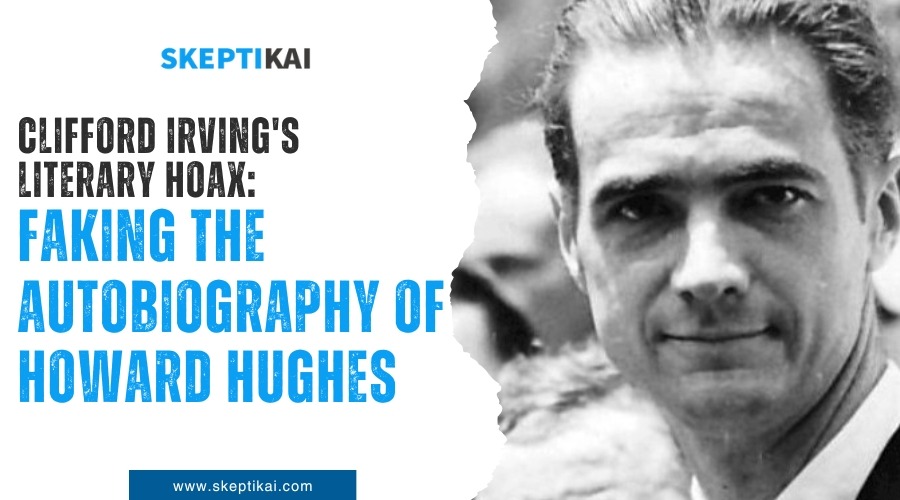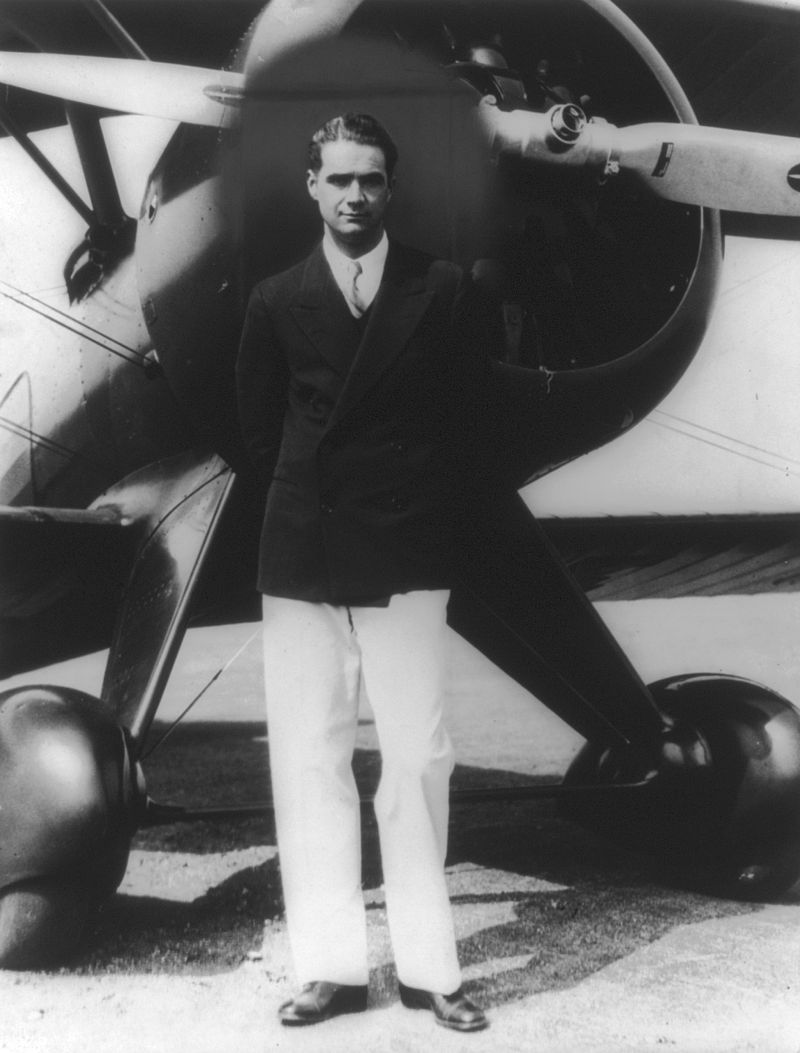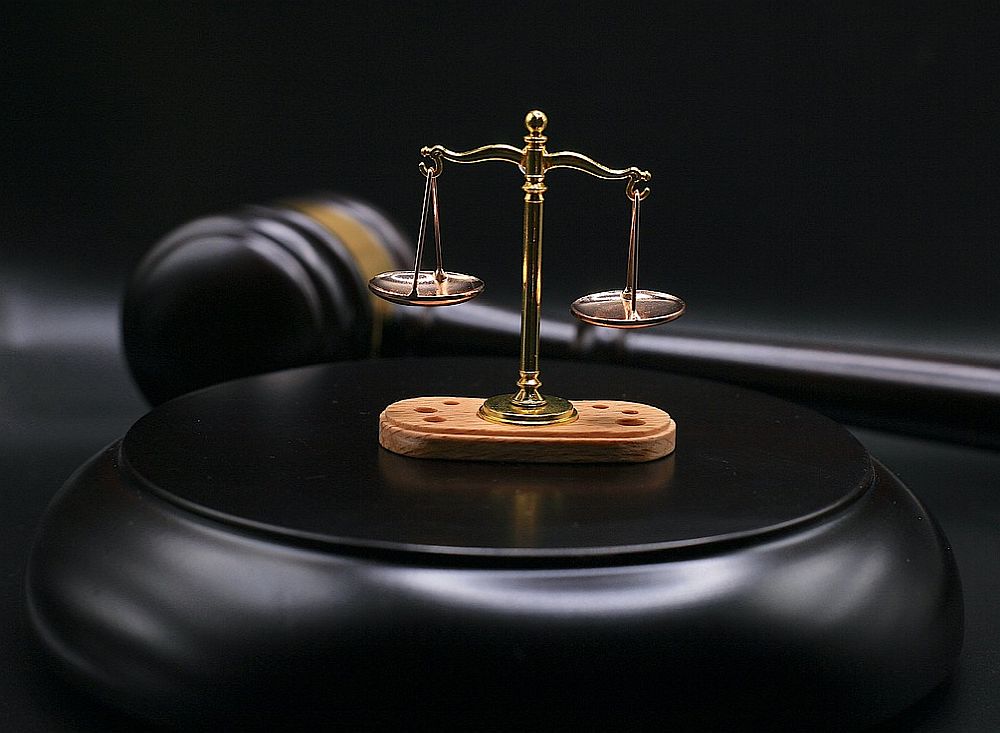Photo of Howard Hughes in 1938.
Imagine you’re crafting a narrative so convincing that even the most seasoned professionals are taken in. That’s precisely what Clifford Irving did in the early 1970s, spinning a web of deceit that nearly saw the light of day as the autobiography of Howard Hughes.
As you explore the intricate details of how Irving and his accomplices managed to hoodwink a major publisher and secure a hefty advance, you’ll find yourself questioning the very nature of truth in publishing. What unfolds is a saga that not only tests the limits of credibility but also serves as a stark reminder of the fine line between ambition and integrity.
Why did Irving think he could pull off such a monumental hoax, and what can his story teach us about the vulnerabilities in the literary and publishing worlds?
Clifford Irving’s Background
Before gaining infamy for his elaborate literary hoax, Clifford Irving was a novelist who’d already made his mark in the literary world. You might find it interesting that Irving’s journey took a dramatic turn when he attempted to pen the autobiography of Howard Hughes, a reclusive billionaire whom he never met. Convincing McGraw-Hill of his direct communication with Hughes, Irving orchestrated one of the most audacious hoaxes of the 20th century.
The deceit involved forged letters and documents, meticulously crafted to lend credibility to the fabricated narrative of Hughes’s life. It’s a testament to Irving’s cunning that his tale was persuasive enough to secure a substantial advance from his publisher. However, as with any house of cards, the stability of Irving’s creation was illusory.
Your attention to this saga might peak knowing that Swiss banking investigators played a pivotal role in exposing the fraud. Their discovery of the forged documents precipitated the unraveling of Irving’s scheme, leading to severe legal consequences. For Irving and his accomplices, the fallout from their audacious literary hoax was a stark reminder of the perilous line between ambition and overreach.
Hughes with his Boeing 100 in the 1940s
The Genesis of the Hoax
At the heart of Clifford Irving’s notorious literary hoax was his deep fascination with Howard Hughes, a figure shrouded in mystery and wealth. Inspired by his work on an art forger’s memoir, Irving saw an opportunity to create a masterpiece of deception. He concocted a plan to write a fake autobiography of Hughes, despite never having met or interviewed the elusive billionaire.
Irving’s audacity didn’t stop there. He forged letters purportedly from Hughes to bolster the credibility of his manuscript. His persuasive skills were such that he managed to convince his publisher, McGraw-Hill, of a collaboration with Hughes on this book, setting the stage for one of the most infamous literary hoaxes of the 20th century.
| Irving’s Role | Action | Impact |
|---|---|---|
| Author | Fabricated Hughes’s autobiography | Sparked a literary scandal |
| Forger | Created fake letters from Hughes | Deceived McGraw-Hill |
| Convincer | Persuaded McGraw-Hill of Hughes’s involvement | Secured a publishing deal |
This hoax wasn’t just a daring feat; it was a meticulously planned operation that drew the world’s attention, making the fake autobiography of Howard Hughes a significant, albeit controversial, part of Irving’s legacy.
Securing the Deal
Having explored how Clifford Irving conceived his grand scheme, let’s now examine how he and Richard Suskind convinced McGraw-Hill to publish the fraudulent autobiography of Howard Hughes. The duo’s deception was nothing short of cinematic, employing forged letters as their main prop. These letters, supposedly from Hughes himself, were their golden ticket to a publishing deal that would shock the literary world.
Here are three key steps they took to secure the deal:
- Meticulous Planning: Irving and Suskind spent countless hours crafting convincing letters. Their dedication to detail made the deception almost undetectable.
- Convincing the Skeptics: Despite some doubts within McGraw-Hill, the forged documents were persuasive enough to convince the publishing industry of the authenticity of Irving’s connection to Hughes. This was a testament to their craftiness and understanding of the publishing world’s inner workings.
- Landing a Lucrative Deal: The culminating success of their deception was securing a substantial advance and rights for the fake autobiography, ensuring widespread attention for the book.
The process was a masterclass in manipulation, showing how meticulous planning and a bold face can turn a wild idea into a publishing deal that fooled an entire industry.
Crafting the Fake Manuscript
Clifford Irving’s creation of the fake Howard Hughes autobiography was a meticulous process, involving extensive research and the fabrication of evidence to lend credibility to his work. You’d think crafting a fake manuscript of such a high-profile figure would be a daunting task, but Irving’s previous experience with the biography of art forger Elmyr de Hory provided a unique insight into the art of deception. He didn’t just write; he wove a complex narrative using forged letters as the backbone of his evidence, convincing everyone of a collaboration with the reclusive billionaire Hughes.
The Irvings went to great lengths to ensure the authenticity of the autobiography, meticulously planning each detail to make the fake manuscript appear genuine. They managed to persuade McGraw-Hill, a giant in the publishing industry, that their work was the real deal, a testament to their cunning and craft. Yet, despite their elaborate efforts, they couldn’t fool everyone forever. Swiss banking investigators eventually unraveled the web of lies, exposing the forged documents that were crucial to the hoax. This turn of events marked the beginning of the end for Irving’s elaborate scheme, but the crafting of the manuscript remains a fascinating study in audacity and creativity.
The Investigation Unfolds
While the crafting of the manuscript showcased Irving’s audacity, it was the discovery of forged documents by Swiss banking investigators that truly brought the literary hoax to light. This pivotal moment marked the beginning of an unraveling that would expose the full scope of the deception, leading to significant legal consequences.
The investigation by the Swiss banking authorities revealed a sophisticated web of lies meticulously spun by Irving and his accomplices. The unfolding of the investigation highlighted several key points:
- Discovery of Forged Documents: Swiss banking investigators unearthed the fabricated evidence Irving used to legitimize his claims, setting the stage for the unraveling of the conspiracy.
- Pleading Guilty: Faced with overwhelming evidence, Irving, alongside his wife and research assistant, admitted to conspiracy and larceny. This admission confirmed the depth of their involvement in the fraudulent scheme.
- Legal Repercussions: For his central role in the hoax, Clifford Irving received a prison sentence of two and a half years, of which he served 17 months. This punishment underscored the serious legal implications of such a deception.
The investigation into Clifford Irving’s literary hoax not only revealed the extent of the conspiracy but also served as a stark reminder of the legal consequences that follow such elaborate schemes.
Irving’s Confession
In 1972, amidst mounting evidence and public denial by Howard Hughes, Irving admitted to concocting the entire autobiography. This confession threw the literary and publishing world into a frenzy. You’ve seen hoaxes before, but nothing quite like this. Irving’s fabrication wasn’t just a small fib; it was an infamous literary hoax that shook the publishing industry to its core. The unraveling of this elaborate scheme highlighted how deeply the hoax had penetrated, affecting not just those directly involved, but also casting a shadow of doubt over the industry’s ability to discern truth from fiction.
Irving’s admission didn’t come lightly. After Hughes himself publicly denied any involvement with the book, the walls began to close in on Irving. His confession was a pivotal moment, marking the end of one of the most audacious fabrications in literary history. It exposed the lengths to which Irving had gone to perpetuate the hoax, bringing to light the intricate details of his deception. The impact of this admission was far-reaching, setting the stage for the inevitable legal consequences that would follow. It was a stark reminder of the delicate balance between creativity and ethics in the world of publishing.
Legal Consequences
Following the revelation of Clifford Irving’s literary hoax, Swiss banking investigators swiftly uncovered forged documents, leading to legal repercussions for Irving, his wife, and their research assistant. The trio’s attempt to fake the autobiography of Howard Hughes not only shocked the literary world but also crossed into criminal territory. Here’s what unfolded:
- Guilty Pleas: Clifford Irving, his wife, and their research assistant all pled guilty to conspiracy and larceny charges. Their admission underscored the gravity of the deception and its breach of legal boundaries.
- Prison Sentences: The legal consequences for their involvement in the literary hoax were significant. Irving received a prison sentence of two and a half years, reflecting the severity of the fake autobiography scheme. Despite the lengthy sentence, he served 17 months before being released. Meanwhile, Irving’s wife faced a shorter term in prison, after which she returned to Switzerland.
- Public and Legal Fallout: The case highlighted the intricate lines between literary creativity and legal infringement. Swiss banking investigators played a crucial role in unraveling the forged documents that underpinned the hoax, leading to the unraveling of Irving’s elaborate scheme.
The legal aftermath of Clifford Irving’s attempt to pen a fake autobiography of Howard Hughes serves as a stark reminder of the repercussions that follow such deceptive undertakings.
Irving’s Legacy
Despite the legal turmoil, Clifford Irving’s story didn’t end with his prison sentence; his legacy, anchored by the notorious literary hoax, continues to stir intrigue and debate in the realms of literature and ethics. The scandal involving the fake autobiography of Howard Hughes not only spotlighted Irving’s audacity but also raised significant questions about authenticity and ethics within the publishing industry. It’s a tale that challenges the very notion of truth in literature, sparking discussions that linger to this day.
Irving’s personal life, marked by multiple marriages and complex family relationships, added layers to his cultural impact, making him a figure shrouded in as much personal mystery as the stories he fabricated. The saga of the Howard Hughes autobiography hoax transcended the confines of the literary world, becoming a cultural phenomenon that inspired documentaries and films, embedding itself firmly in popular culture.
As you reflect on Irving’s legacy, it’s clear that the fascination with his life and the literary hoax he orchestrated persists. It’s a testament to the lasting power of a story well-told, no matter how fabricated, and its ability to captivate and provoke thought across generations.
Conclusion
In the end, Clifford Irving’s elaborate hoax serves as a stark reminder of the dangers of deceit in the literary world.
You’ve seen how his ambition led him down a path of forgery and lies, ultimately resulting in legal repercussions and a tarnished legacy.
Despite the initial intrigue and potential financial gains, Irving’s downfall highlights the critical importance of integrity in publishing.
Let his story be a cautionary tale, underscoring the value of honesty in your creative endeavors.




